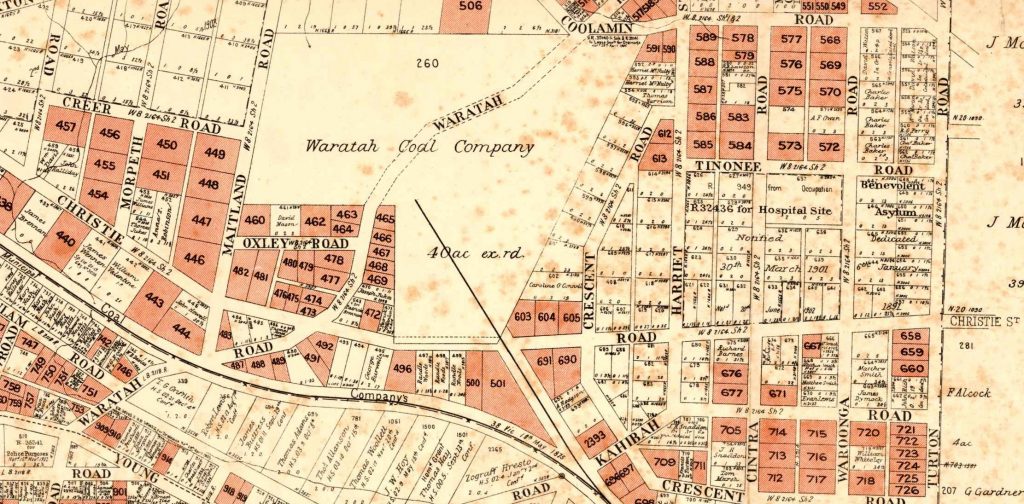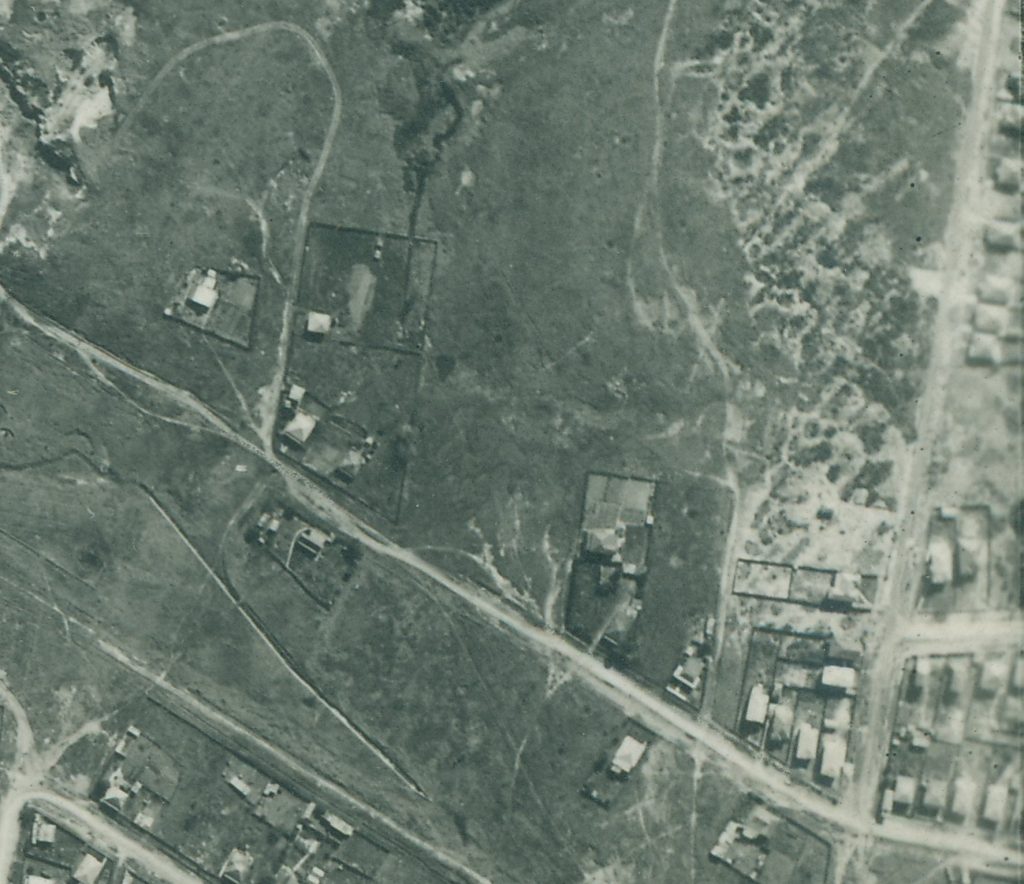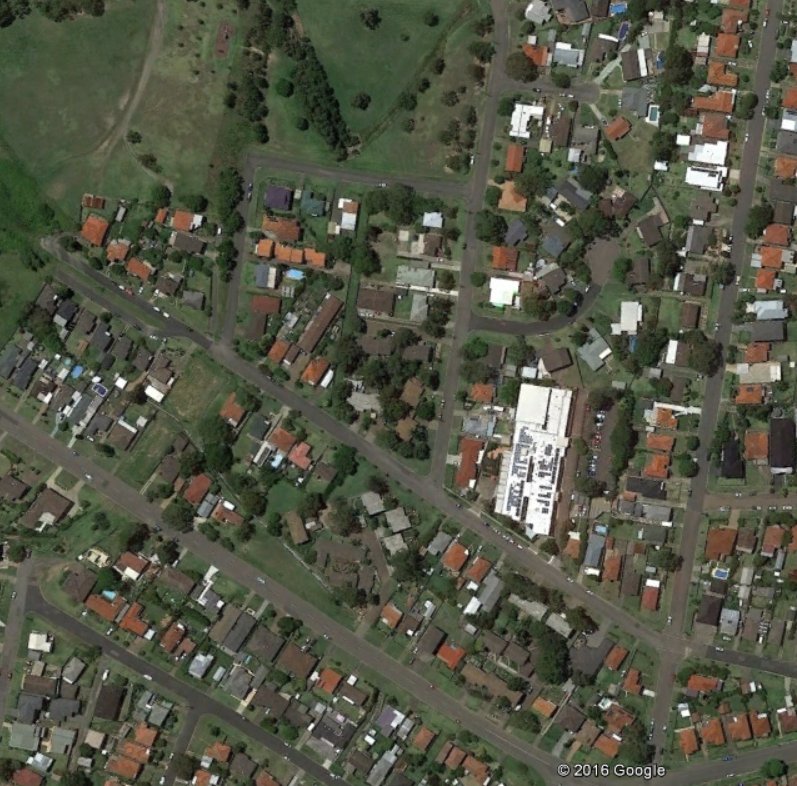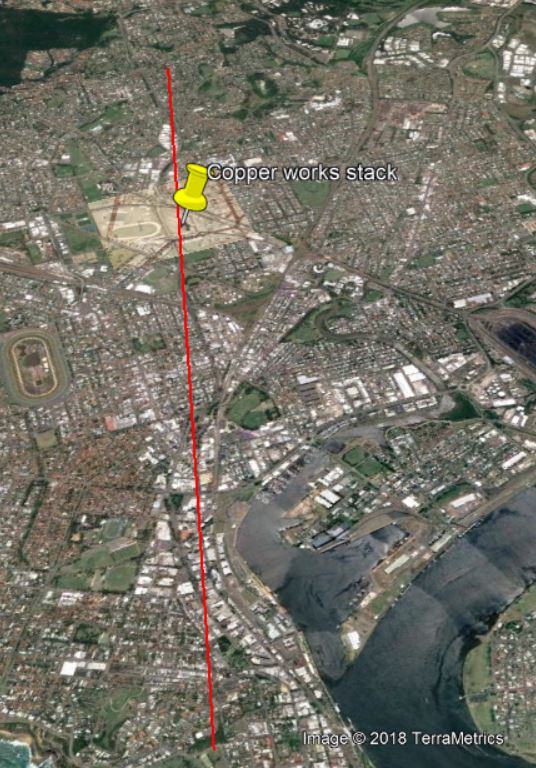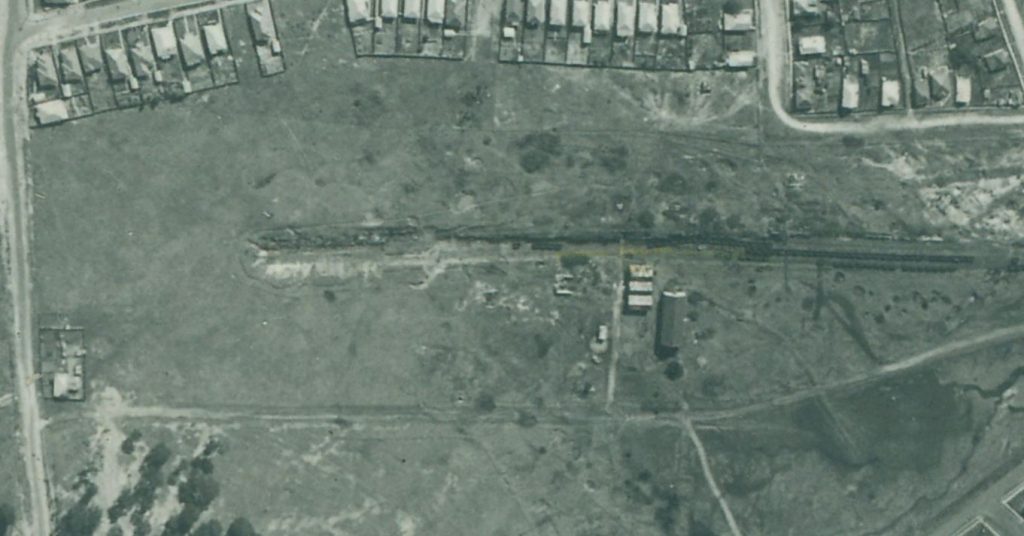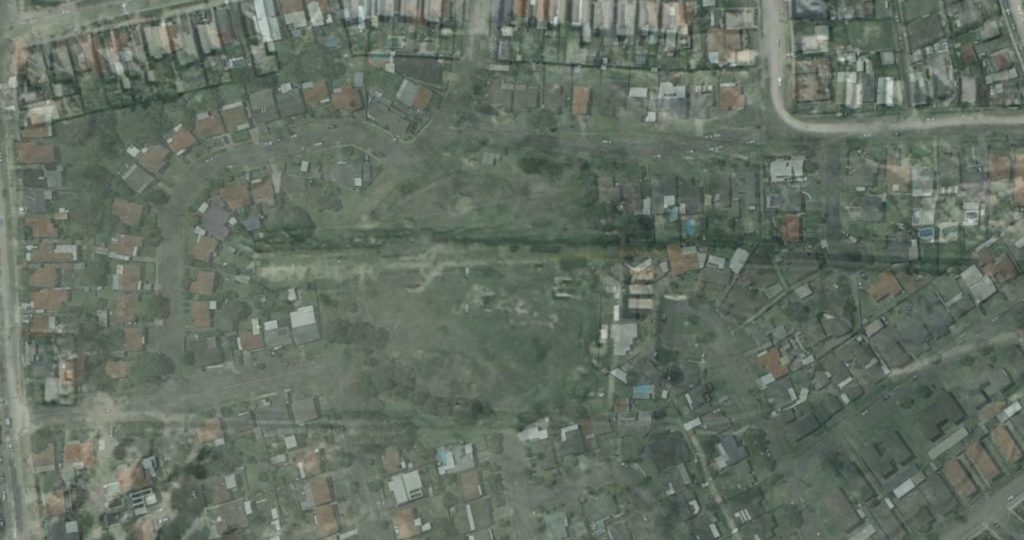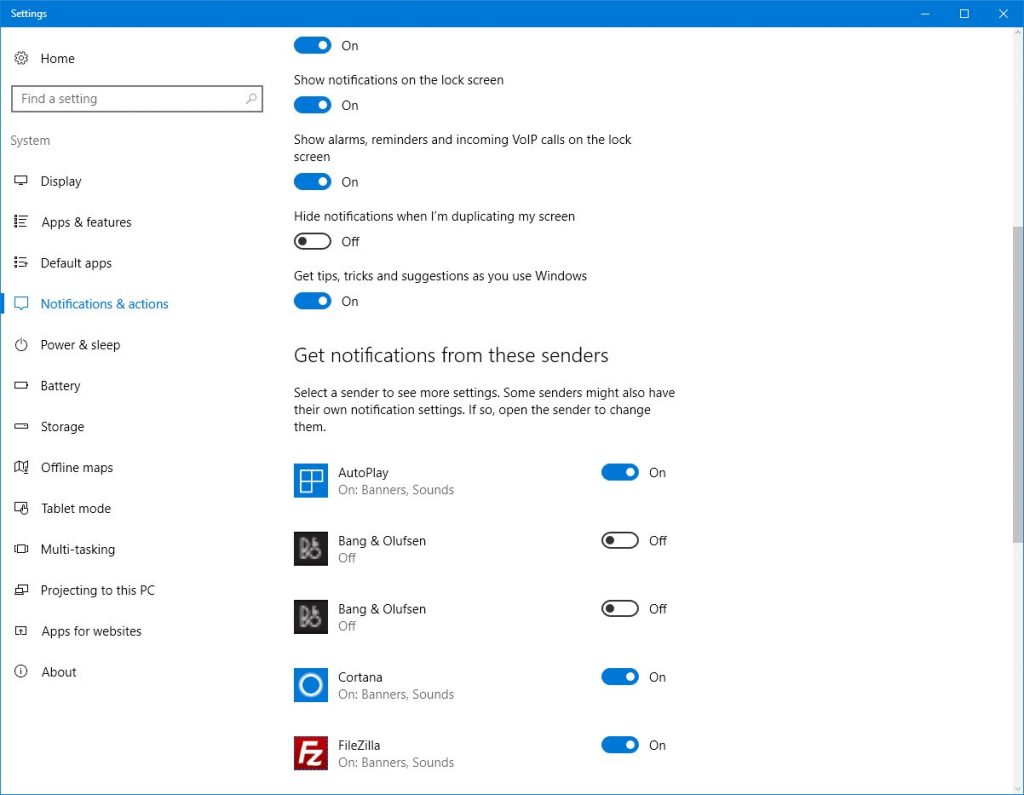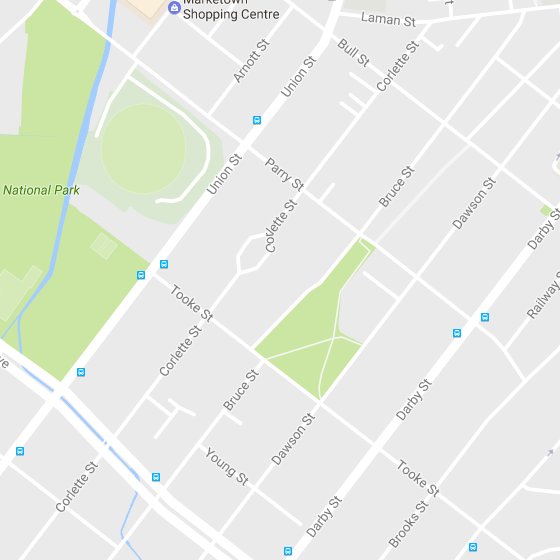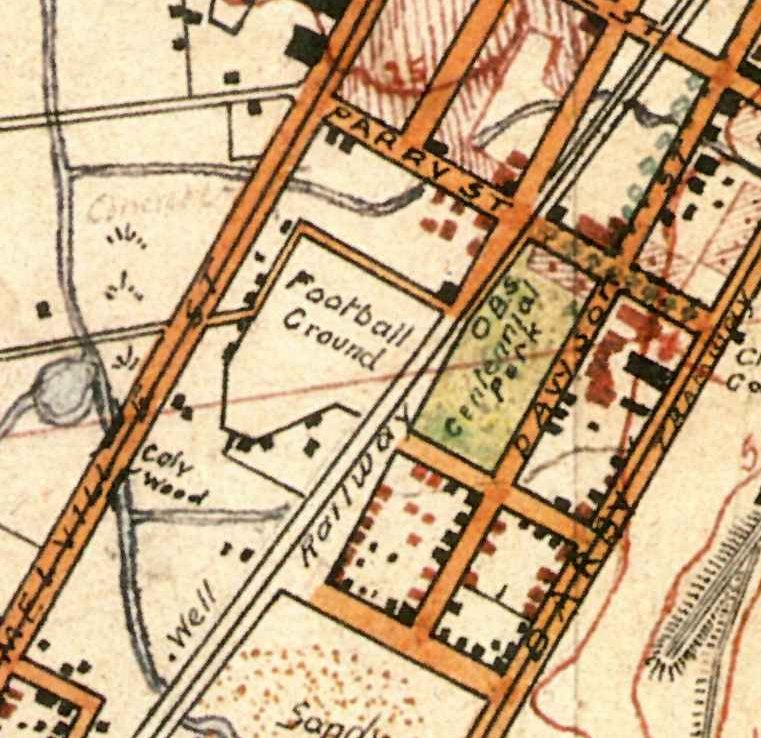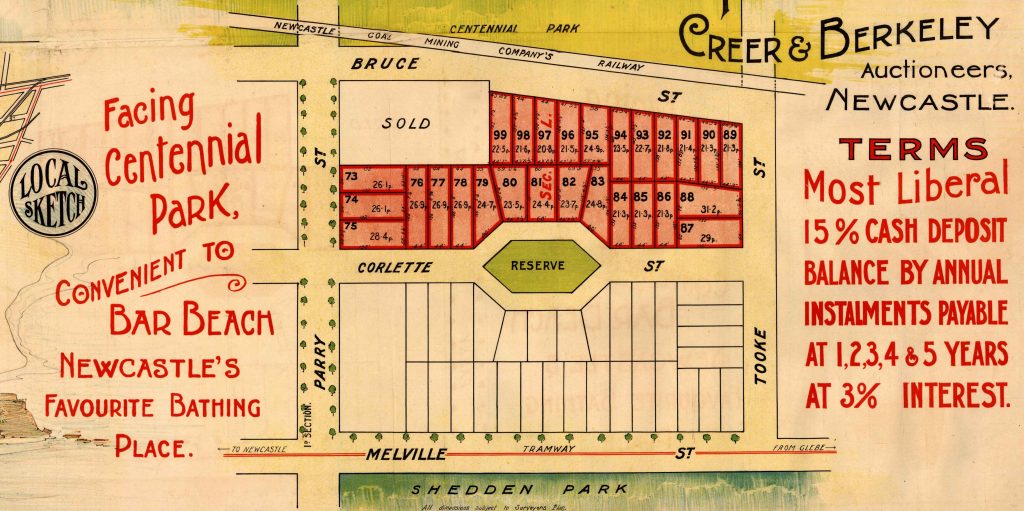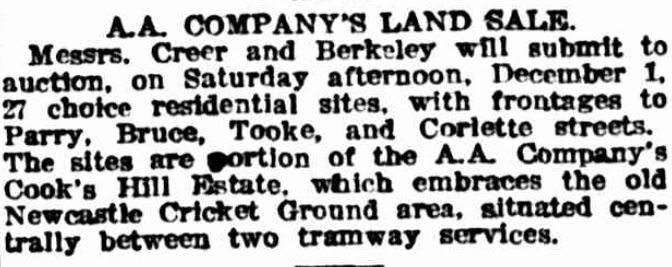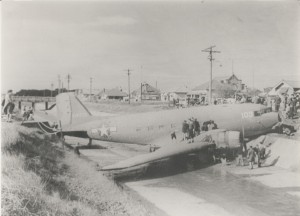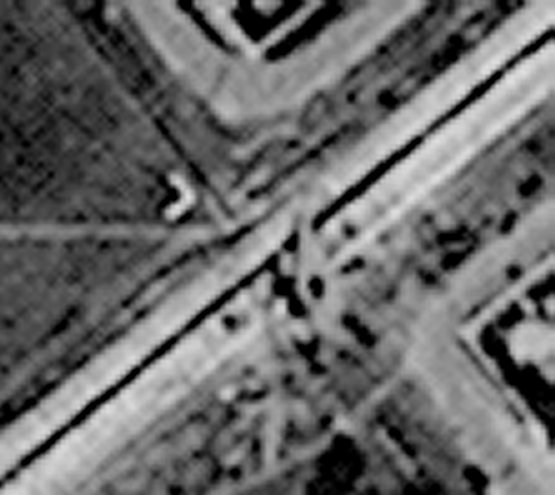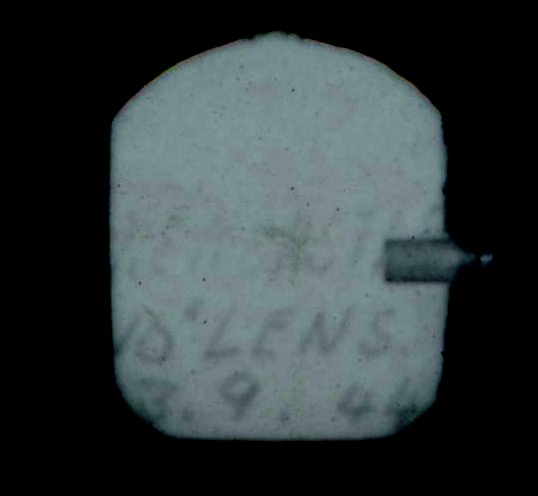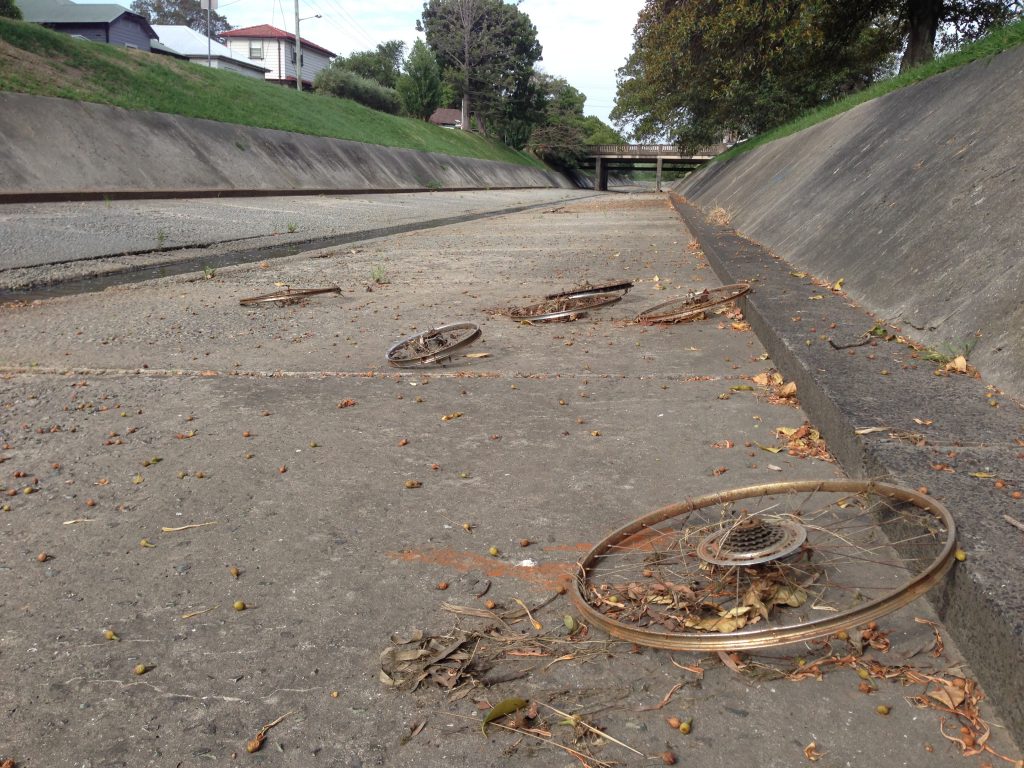Mike Scanlon in today’s Newcastle Herald has an article about the naming of Christo Road in Waratah. In the article he quotes from a letter from a reader, Greg Archbold, who says of John Penrose Christoe …
“He arrived in Newcastle about 1869 to establish a smelting works at New Lambton where I believe (the old) Goninans is now located. “
This location is indeed correct, although the various suburbs and names mentioned in connection with the smelter makes things a little confusing. The smelter was the English and Australian Copper Smelting Company, which operated until about 1917.

Photograph of Waratah copper smelter by Ralph Snowball, 1906. University of Newcastle, Cultural Collections.
The location of the smelter is now in the modern suburb of Broadmeadow, but at the time the smelter was built, Broadmeadow wasn’t a suburb or town – it was a swamp. So the smelter was variously described as being “within a mile of New Lambton” or “near Waratah”, those being the closest townships. The association of the smelter with New Lambton was reinforced by the fact that the land the smelter was built on was the leasehold property of Messrs. J. and A. Brown, who owned the New Lambton colliery, and who had an exclusive agreement to supply coal to the smelter. For this reason the works were often referred to as “The New Lambton Copper Smelting Works”.
Corporal Barrett’s 1910 map of Newcastle shows the location of the smelter, and also shows that Christo Road was originally called Newtown Road. (Newtown was the original name for Hamilton North.)
A 1906 real estate poster shows Christo Road mis-spelled as both “Christie Road” and “Christie St”.
Real estate advertising that doesn’t align with reality is nothing new. The 1906 poster above shows the promise of neatly laid out roads and residential blocks in the Waratah West region near Christo, Creer and Morpeth roads. However a 1944 aerial photograph of the area I recently obtained from Newcastle Library, shows that 38 years later, there was only Christo Rd and a tiny smattering of houses in the area.
Update, November 2018
Chris Weeks suggested that the smelter smoke stack can be seen in a 1906 photo from the obelisk.

Smelter smoke stack as seen from Newcastle Obelisk, 1906. University of Newcastle, Cultural Collections.
This is confirmed by drawing a line in Google Earth from the obelisk to the peak of the North Lambton hill (seen in the upper left corner of the photo portion above) and noting that the smelter stack is slightly to the right.
Newspaper articles
| Article Date Event Date | Notes |
|---|---|
| 6 Nov 1869 | "The English and Australian Copper Company, who carry on extensive smelting works in South Australia, are about to establish similar works within a mile of New Lambton. |
| 12 Feb 1870 | Construction of the English and Australian copper smelting works at Broadmeadow has been in progress for three months, and smelting "will be commenced in about two months." (This was a wildly optimistic estimate, as smelting eventually commenced in June 1872, more than two years later.) The manager is "Mr. Christoe, a gentleman of great experience in copper-smelting." |
| 15 Sep 1870 | The weather has significantly delayed the opening of the smelter. "For upwards of two months there was such an accumulation of water at the establishment as to defy the possibility of the works being proceeded with, and thus the company were unexpectedly debarred from carrying out their design in the contemplated time as regards the inauguration of the process of smelting." The manager of the smelter is Mr. Christoe. |
| 15 Jul 1871 | Advertisement for a General Manager for the New Lambton Smelting works. |
| 9 Sep 1871 | 250 tons of copper ore have arrived in Newcastle Harbour destined for the New Lambton Copper-smelting Works so "now there is a reasonable hope that this fine and valuable property created here at a great expense, will very shortly become utilised." |
| 6 Feb 1872 | Mr Christoe supervising operations at the Burwood Copper Smelter, Glenrock lagoon. |
| 18 May 1872 | Copper ore has been received, but smelting has not yet begun. |
| 18 Jun 1872 | Lighting the first fires in two of the coppersmelting furnaces of the English and Australian Copper Smelting Company's works near Waratah. |
| 19 Oct 1872 | "There appears to be an anomaly existing between our copper- smelting establishments, which time only can set at rest ; for while at this establishment five furnaces are idle for want of ore, at the Hunter River Works, five furnaces are idle here from the want of men acquainted with smelting operations to work them." |
| 2 Oct 1917 | Smelting of ore has ceased. "The business of the company during the past year had to be conducted under conditions of great risk and anxiety, which finally forced the board reluctantly to instruct the manager in Australia to cease making purchases of ore, to smelt out all copper available, and to close the smelting works, a process that has been carried through." |
| 6 Nov 1919 | "The long connection of the English and Australian Copper Company, Limited, with the Newcastle district has been finally severed through its having recently sold the land that was the site of the works, known as the Waratah works." |
| 8 May 1920 | "The chimney stack of the old copper works, which was felled some time ago, gave about 150,000 bricks." |


